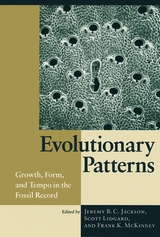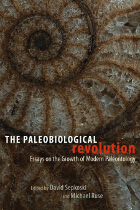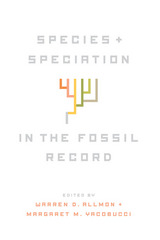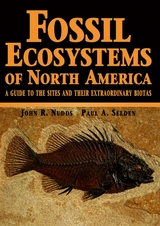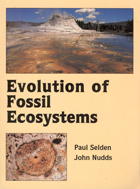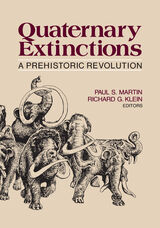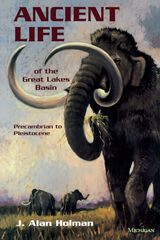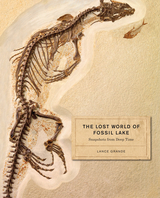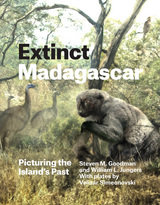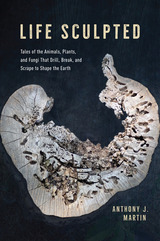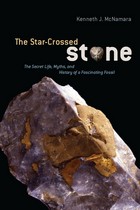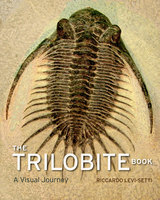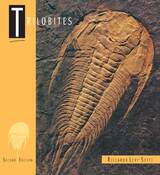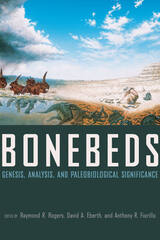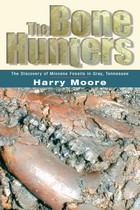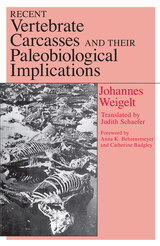
Amazon Kindle
Apple Books
Barnes & Noble Nook
EBSCO eBooks (formerly NetLibrary)
Google Play
OverDrive
illustrated by Velizar Simeonovski
Cloth: 978-0-226-14397-2 | eISBN: 978-0-226-15694-1
Library of Congress Classification QE757.M28G664 2014
Dewey Decimal Classification 560.691
In Extinct Madagascar, noted scientists Steven M. Goodman and William L. Jungers explore the recent past of these land animal extinctions. Beginning with an introduction to the geologic and ecological history of Madagascar that provides context for the evolution, diversification, and, in some cases, rapid decline of the Malagasy fauna, Goodman and Jungers then seek to recapture these extinct mammals in their environs. Aided in their quest by artist Velizar Simeonovski’s beautiful and haunting digital paintings—images of both individual species and ecosystem assemblages reproduced here in full color—Goodman and Jungers reconstruct the lives of these lost animals and trace their relationships to those still living.
Published in conjunction with an exhibition of Simeonovski’s artwork set to open at the Field Museum, Chicago, in the fall of 2014, Goodman and Jungers’s awe-inspiring book will serve not only as a sobering reminder of the very real threat of extinction, but also as a stunning tribute to Madagascar’s biodiversity and a catalyst for further research and conservation.
Foreword
Acknowledgments
PART 1: Madagascar in Perspective: Past and Present
Introduction
General
Aspects of Format
The Artist
Geological Time, Dates, and Radiocarbon Dating
What Is a Subfossil?
The Types of Subfossil Sites
An Overview of the Origins, Geology, Animal Colonization, and Modern Habitats of Madagascar
Madagascar in Deep Time—Isolation and Origin of Its Plants and Animals
History of Animal Colonization
Geography
Geology
Vegetational Patterns
Humid Forest
Dry Deciduous Forest
Spiny Bush
Savanna and Grassland Formations
A Brief History of Climatic Change on Madagascar since the Late Pleistocene
History of Human Colonization of Madagascar
Considerations of Language and Different Types of Introductions
The Human Genetic Evidence
Evidence of Pre-Iron Age Colonization of Madagascar
The Archaeological Record of Occupation and Settlement
Paleontological and Paleoecological Evidence
Summary
Human Interactions with Now-Extinct Land Vertebrates
Reptiles
Tortoise
Birds
Elephant Birds
Mammals
Lemurs
Hippos
Hypotheses on What Caused the Extinctions during the Holocene
Extinction, Conservation, and the Future
PART 2: Case Studies
Geographical Plates
Plate 1: Cap Sainte Marie—the Ecology of Elephant Birds and Their Interface with Humans
Plate 2: Andrahomana I—the Ecology of Extreme Southeastern Madagascar and a Barometer of Change
Plate 3: Andrahomana II—Evidence of a Holocene Tsunami in the Southern Indian Ocean and Predator-Prey Relations
Plate 4: Tsimanampetsotsa—Rapid Ecological Shifts in the Face of Natural Climate Change
Plate 5: Taolambiby—Hypotheses Associated with Animal Extinction and Hunting by Humans: Physical Evidence and Interpretation
Plate 6: Ankilitelo—a Deep Pit Cave and Inferences on Recent Ecological and Faunal Change
Plate 7: Ampoza I—Reconstruction of the Ecology and Fauna in a Formerly Permanent Riverine Habitat in the Southwest
Plate 8: Ampoza II—Ecological Change in a Forest Community and Connecting Humid Forest Corridors to the Eastern Portion of the Island
Plate 9: Belo sur Mer—a Window into Different Hypotheses Associated with Environmental Change: Natural versus Human-Induced
Plate 10: Mananjary—the Former Estuary System of Eastern Lowland Madagascar and Some of Its Faunal Elements
Plate 11: Antsirabe Region—Ecology of Highland Marsh and Forest Habitats as a Measure of Change through Time
Plate 12: Ampasambazimba—Reconstruction of a Montane Woodland Habitat that No Longer Occurs on the Island
Plate 13: Anjohibe I—Secrets of the Past Disclosed by Careful Study of Subfossil Bone and Pollen in a Cave
Plate 14: Anjohibe II—Inferences Based on Cave Remains and Aspects of the Organisms Living in the Adjacent Ecosystem
Plate 15: Anjajavy—a Trapdoor Cave, Ecology of an Extinct Lemur, and Untold Extinct and Extant Biodiversity
Plate 16: Ankarana I—Ecological Change of a Forest Community, a View from the Ground Up
Plate 17: Ankarana II—Ecological Change of a Forest Community, a Bird’s-Eye View from the Forest Canopy
Plate 18: Ankarana III—Tragedy and How the Bone Remains of an Extinct Lemur Can Help Piece Together How It Lived and the Former Local Forest Ecology
Species Plates
Plate 19: Cryptoprocta spelea—an Extinct Mega-Predator and Aspects of How It May Have Lived and Hunted
Plate 20: Stephanoaetus mahery—a Presumed Primate Specialist and Its Role in the Evolution of Behavioral Aspects of Living and Extinct Lemurs
References
Index to Malagasy Place-Names
Index to Scientific Names
If you are a student who cannot use this book in printed form, BiblioVault may be able to supply you with an electronic file for alternative access.
Please have the accessibility coordinator at your school fill out this form.
It can take 2-3 weeks for requests to be filled.
See other books on: Fossils | Geology | Madagascar | Mammals | Picturing
See other titles from University of Chicago Press
